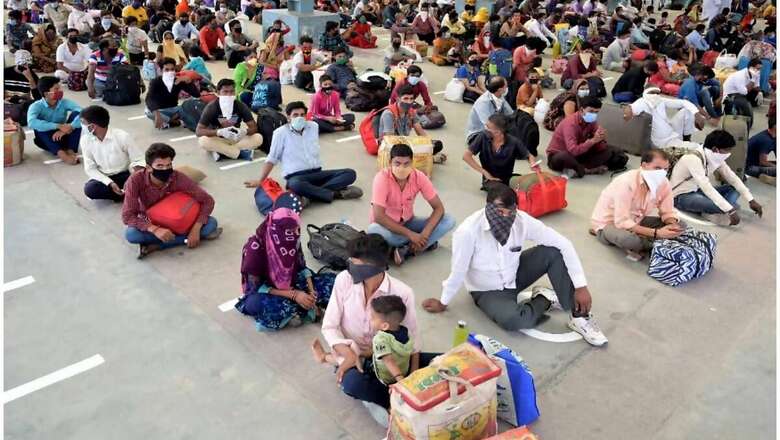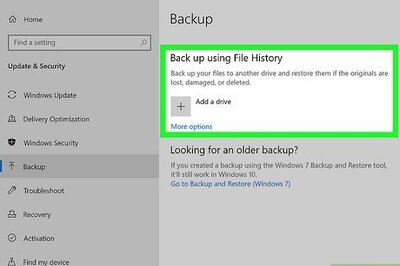
views
The government has been at the receiving end this past week, from farmers as well as from workers in India’s vast informal sector. It is no coincidence that allegations from both sets of protestors are similar: that the government has leaned towards corporates while abandoning interests of the underdog.
The first set of allegations stems from the sweeping changes made in the way farmers can now sell their produce; farmers have alleged that the new regime puts them at the mercy of “powerful” corporates and instead of raising their incomes, will depress their earnings.
The second set of allegations is emanating from the three new labour code bills passed by Parliament in the just-concluded Monsoon Session. These broadly relate to workers’ right to strike and have pre-defined working hours, employers’ right to hire and fire and provision of social security benefits to gig workers, among others. Here again, the fear of big, bad corporates is apparent.
Back-of-the-envelope calculations show that workers in small shops, bhattis, kirana stores and in other small enterprises together account for 9 in 10 Indians who are engaged in any kind of work at all. In short, these bills affect the working conditions of an overwhelming majority of working Indians.
These are the key highlights of the Labour Codes 2020:
Industrial
Relations Code
a) Government approval now needed for closure, layoffs and retrenchments for firms employing 300 or more people against firms employing 100 or more earlier. An analysis by brokerage Edelweiss notes that 16 states had previously raised the threshold to 300 employees anyway
b) The bill requires all employees to give a 14-day notice before a strike or lockout and this provision obviously dilutes the powers of trade unions
c) The definition of workers is now based on the wage he/she draws and anyone earnings up to Rs 18,000 is a worker here
d) Employer not bound to pay any retrenchment compensation to a fixed-term employee
Social
Security Code
a) Provision for firms to provide universal social security, including workers in the unorganised sectors and gig workers
b) The Centre to set up such a Social Security fund while state governments will also set up and administer separate social security funds for unorganised workers
c) Schemes for gig workers may be funded through a combination of contributions from the Centre, states and aggregators
d) For working journalists, the threshold of gratuity payment has been lowered from five to three years
Occupational
Safety, Health and Working Conditions Code
This code aims to consolidate and amend laws regulating the occupational safety, health and working conditions of persons employed in an establishment and related matters
a) Women can now work night shifts
b) Rights and duties for both, employers and employees, now laid down
Alok Prasanna Kumar, Senior Resident Fellow at Vidhi Centre for Legal Policy, pointed out that there was a need to consolidate and harmonise labour laws at the central level, given that they have been made over a long period of time and need to be updated thanks to latest jurisprudence. “The idea of a consolidated code is not per se bad if it harmonizes the legislation and removes conflicts. The present codes do that to some extent. However, simplification is not necessarily a good thing if it comes at the cost of workers’ rights.”
On workers’ right to strike work, for example, Kumar said more procedural requirements had been placed in their path. “This will make collective bargaining harder. Employees are necessarily at a disadvantage and industrial relations laws should look to remedy this imbalance of power and not aggravate it.”
On the social security issue, he said concerns have been raised over the “corporatisation” of the bodies in charge of social security (such as EPF and ESI). “This, workers apprehend, could be putting the management of the funds at risk instead of guaranteeing them financial security. While these bodies were earlier government entities, the concerns seem to be around the fact that the boards have now become body corporates with a CEO raising questions as to how the body will be accountable to the millions of workers whose savings it will have control over.”
Prime Minister Narendra Modi has hailed the passage of the labour code bills. He tweeted:
दशकों तक देश के श्रमिकों को कानून के जाल में उलझाकर रखा गया। अब इस स्थिति को बदल दिया गया है।Labour Codes के जरिए श्रमिक साथियों को दर्जनों कानूनों के कुचक्र से निकालने का प्रयास किया गया है।
उनके स्वास्थ्य, सुरक्षा, सुविधा और वेतन को लेकर अब कानूनों को सरल बनाया गया है। pic.twitter.com/KqFbuG0HMh
— Narendra Modi (@narendramodi) September 25, 2020
“For decades, workers have been enmeshed in legal tangles but now this situation has changed. Through Labour Codes, effort has been made to extricate worker from the web of dozens of laws. Laws relating to their health, security, convenience and wages have been simplified”.
The Working Peoples’ Charter, a collective of workers in the informal sector, has pointed out that social security has not been provided as a right and the code does not stipulate a clear date for enforcement either. This drives home the plight hundreds of thousands of informal sector workers suffered in the summer of 2020, when a harsh lockdown rendered them jobless and they were forced to return home without either food or transport.
The Collective has also pointed out instances where the Code falls short of being universally applicable: For PF, only establishments with 20 or more workers are covered, excluding the millions of micro and small enterprises from its ambit; existing employees could anyway be excluded. There is also no mention of how social security contributions would work for atypical arrangements where there is no clear employer and employee relationship – including home-based work, self-employment, piece rate work, etc.
So what should the government do to empower workers while also ensuring that ‘ease of doing business’ remains for employers? Anirudh Chakradhar, Partner, Pragma Development Advisors LLP, said central and state governments should comply with the ILO’s standard (such as those in Hours of Work (Industry) Convention 1919 and Hours of Work (Commerce and Offices) Convention, 1930 (No.30) – 48 regular hours of work per week, with a maximum of eight hours per day) and consult Labour experts and institutions before trying to modify the rules and norms of various state labour laws.
“The recent radical steps taken by states like Uttar Pradesh, Gujarat, Uttarakhand to modify the state labour laws to promote the economic activities have put the migrant workers at a precarious state.”
Chakradhar said the focus has been on ‘simplifying’ the labour law regime by bucketing existing legislation into four codes, rather than a comprehensive exercise to review and modernize them. “In many cases previously, some of the major challenges were with respect to implementation and enforcement of existing laws. Once again, a focus on this aspect, with respect to how technology could enable the process, as opposed to modifying legal thresholds and safeguards, could have gone a long way in making protections robust, while also reducing employer burden.”
Disclaimer: The author is a senior journalist. Views are personal




















Comments
0 comment